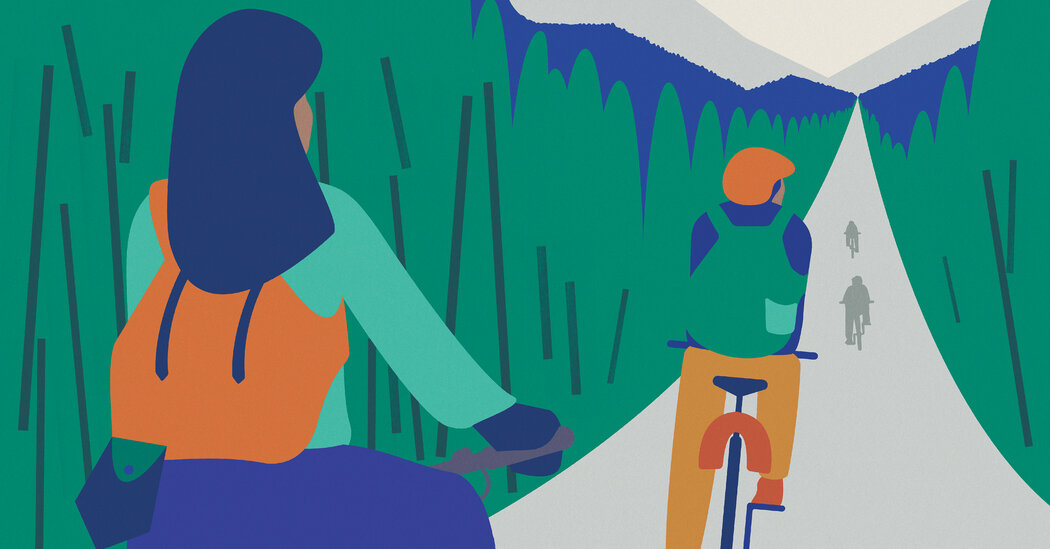
I didn’t understand then how much would change, or how quickly. Soon after, the park road was closed because of melting permafrost and landslides, locking a bike trip to Polychrome Pass into the archives of the past. I couldn’t see past the present chaos of family life, each hour messy and loud, to a picture of my older son one day pedaling himself to kindergarten. And nowhere in my imagination did I hold a space for the long pandemic months at home when biking often felt like the only normal thing we did. What I did realize was this: Bicycles would take us places, now and always. Between sightings of bear behinds and breastfeeding on the tundra, gazing beyond the well-trodden path into the park’s vastness seemed the closest thing to freedom I’d known since becoming a mother of two.
Since the trip to Denali, our cycling styles have aged with our sons, who, at 5 and 7, are no longer babies, but boys. In summer, we’ve hauled kid carriers and backpacks, stacked bikes upon bikes, and covered remarkably few miles without whining. In winter, we’ve tunneled through snow drifts and slid on ice, often not in the manner we’d intended. Throughout each season, our fleet shifts in tandem with our lives. From toddler balance bikes to trailer bikes, panniers to sleds, tow ropes to sheer stubbornness, the only lesson worth recalling is that nothing stays the same for long.
Often, we’ve found bicycles to be as essential for entertainment as they are for transportation, like they were during a weekend spent with my sister’s family in the Talkeetna Mountains north of Anchorage. With one balance bike, three pedal bikes, four children and three sweating, backpack-toting adults, we headed out in the rain along a muddy track. When the trail became too steep to ride, we stashed the bikes behind a tree and scrambled up to an alpine lake where we pitched the tent and peeled soggy clothes, picked M & Ms from trail mix and assured our kids that, yes, we would someday make it home again. In their imaginations, they might have biked a marathon up a mountain then climbed the world’s tallest peak. For the adults, weary from cajoling and bribing and wondering whose bad idea this had been, it felt almost as long. But by breakfast the next morning, everyone’s complaints had faded with the rain. When we returned to our bikes the kids whooped and cheered, elated by the prospect of wheeling downhill.
As our range has expanded, so has our speed, which can be both a gift and a terror. One afternoon, on a local mountain bike trail, I found myself alternately sweating as I pushed uphill and shivering as I waited, enticing one son with sweets and the other with a promise that we were almost there, or at least I thought we were. As we neared the end of the loop, the trail narrowed and the boys jockeyed for position, the younger one making a bold, poorly timed pass. In a blur of wavering handlebars and splattering mud, they careened around the corner and past a bull moose that had just stepped into view below us. I pedaled frantically after them, fearing the worst. When I arrived at the bottom of the hill to find both boys hollering but unhurt and the moose trotting off in the distance, I squeezed them hard and close. We sat down on a log and I divided the last of the gummy bears into their damp, dirt-stained palms, slowly counting each one like a blessing.
It would be a stretch to say that biking always makes us feel exercised and energized, our family unit cohesive and cheerful. Even bicycles don’t work miracles. Instead, they help carry us back to ourselves, offering a mirror in which we recognize time as fleeting, parenting as humbling, and family adventures as mostly worth chasing. Above all, they shift our horizons, never leaving us quite the same as we began.






